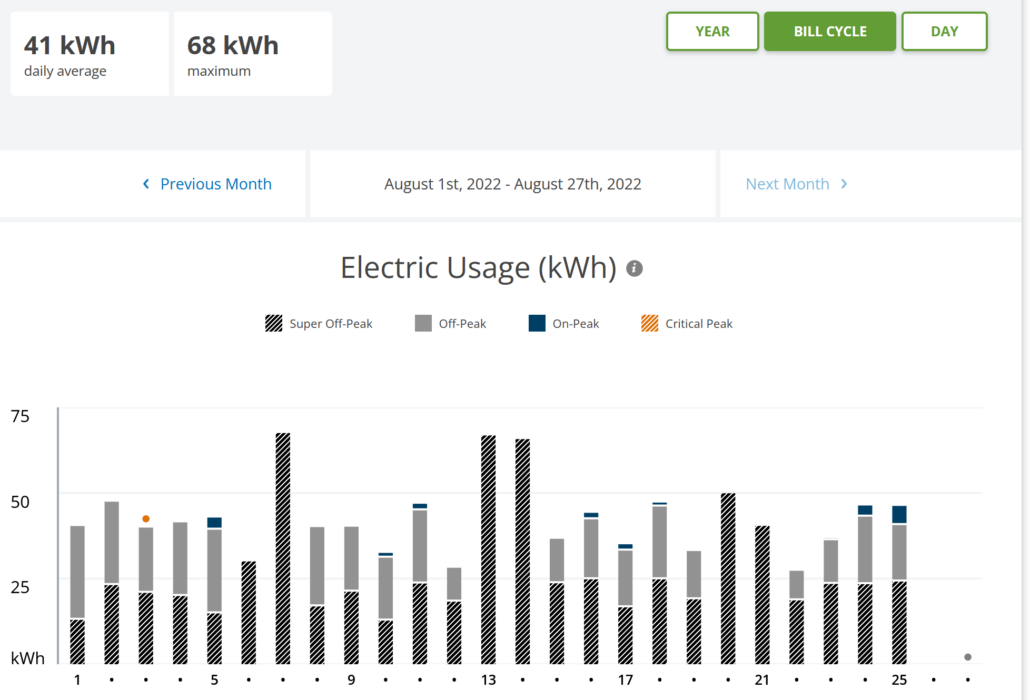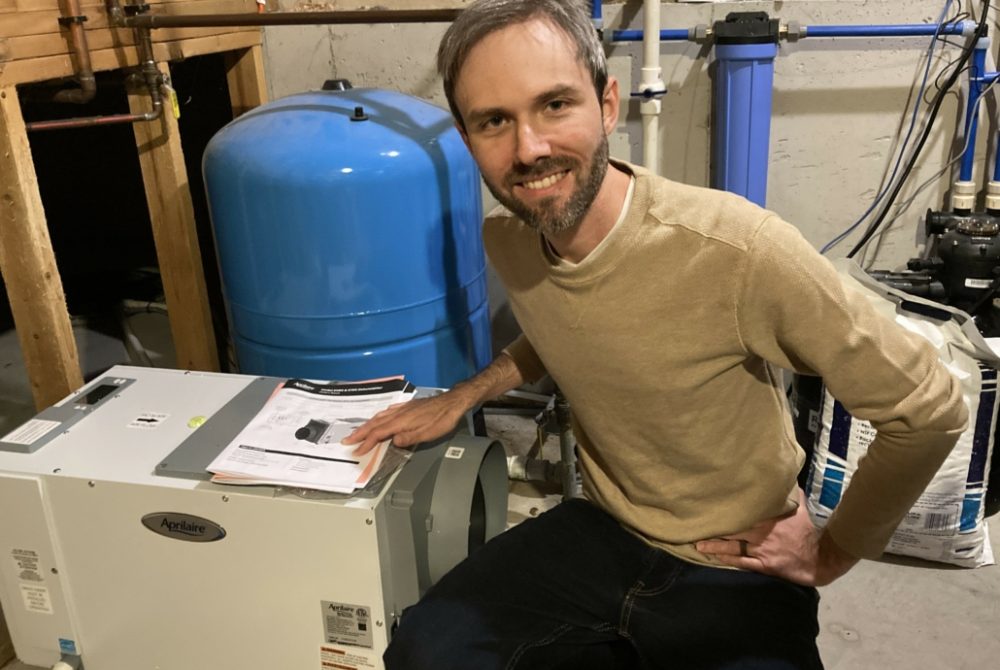I am very grateful to have had my Aprilaire whole-home dehumidifier now for a couple of months, and I want to share my experience with you.
The system is very energy efficient and has worked well getting out the humid air in my house. Humidity can be an issue in the swing seasons and even in winter when it does not appear humid. Tracking humidity with Awair and SunRADON, LLC has shown me some of the bad water management practices in both my home and the building industry at large. This causes issues that require these systems to run a lot. Even in winter, when it is dry and my whole house AprilAire humidifier is running, I still need the dehumidifier in the basement due to excess humidity!
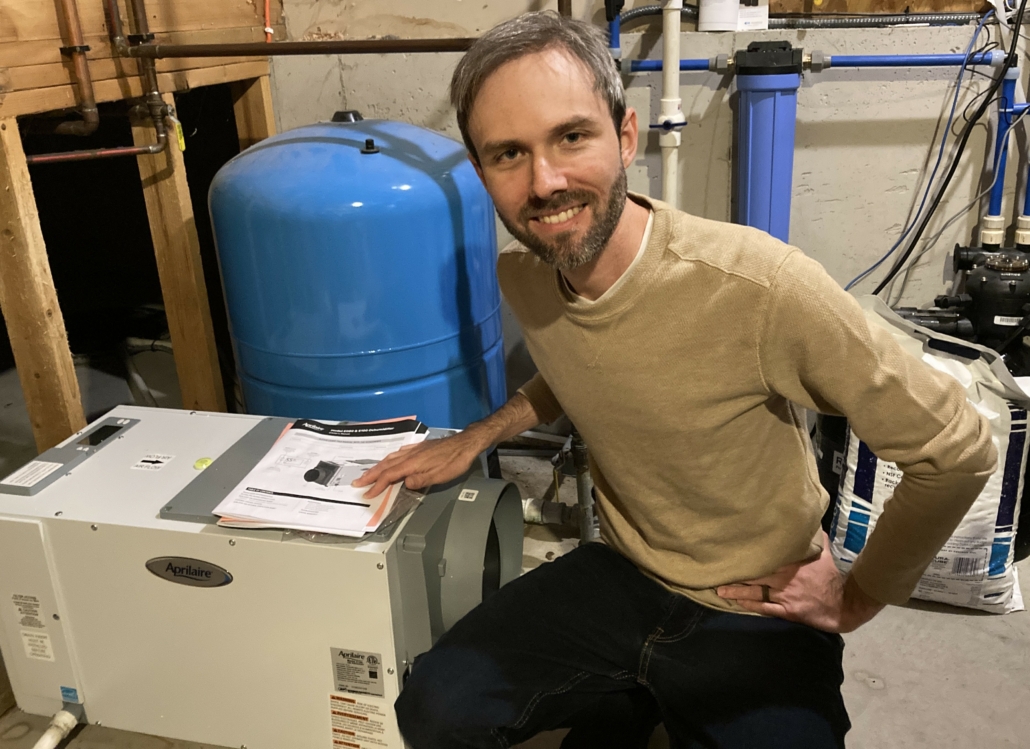
Brett Little, Education Manager, seen here with his Aprilaire Dehumidifier
My entire home is two stories with a walkout basement, 1,853 square feet, built mostly to the IECC 2012 code with 978 CFM of air leakage. The home has a Panasonic Intelliabalance energy recovery ventilator running 24/7. Usually, I have had it set to 70 – 100 CFM tested to only pull around 93 CFM at full speed. The room with the new Aprilaire dehumidifier is 442 square feet. The mechanical room is unconditioned, not ventilated, and in a half-walk-out basement, half-finished crawl space (not open to the ground). The basement has some poorly installed fiberglass batts in the rim though not air-sealed, and likely a leakier spot in the home. The ducts are now sealed, though but panned through the floor joists. The basement likely has little proper water management foundation practices that were done during the build. The home has no gutters, but, I believe, the house sits on well-draining sandy soil. The sump pit is wide open, and a contractor spotted growth within it upon installation of the dehumidifier. The sump pit was never sealed.
I have attached some photos of the installation. It was about $200.00 versus $2,000 if they went to duct it. The system is standalone, but I hope to eventually update it to duct out the exhaust air into the HVAC system return or supply.
First of all, I am pleased with the humidity levels pre-and-post. While they’re not at my target of 40 for the entire home, they are under 50, and clearly, the dewpoint is in a good place. I had turned up our air conditioning about 2° from an average of 74 before the dehumidifier to 76. Overall, for the most part, it’s more comfortable even at that higher rate with the dryer air. The Awair Element sensor is in my living room, as far from the utility room as possible, and you can see pre and post-summer 2022 humidity data.
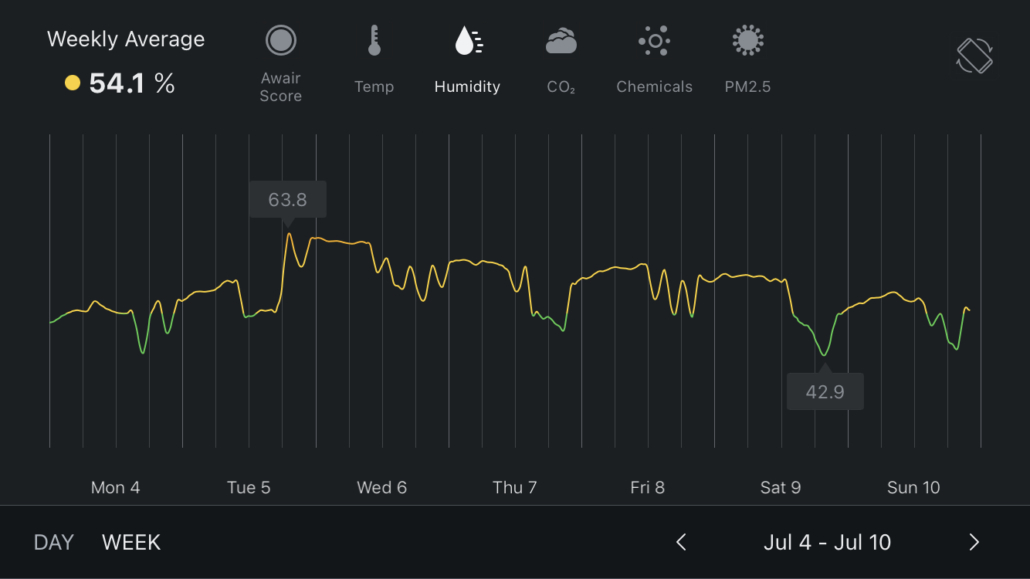
Whole home humidity Awair sensor before AprilAire was installed

Whole home humidity Awair sensor after AprilAire was installed
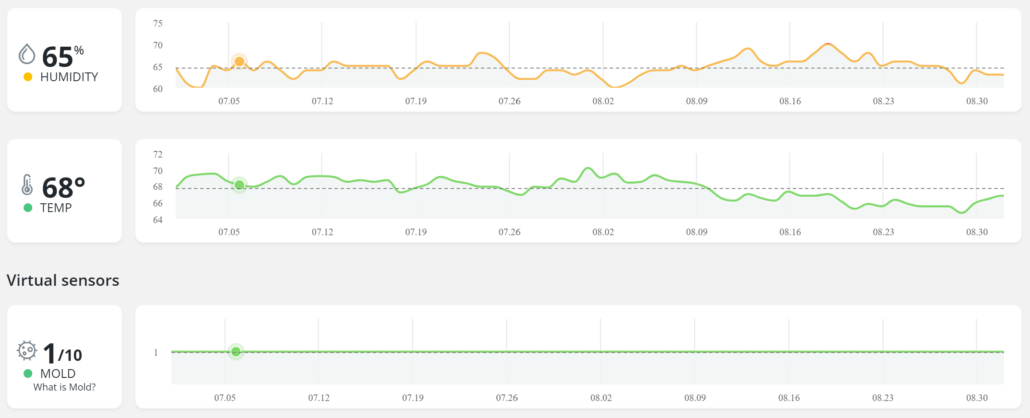
Basement Airthings sensor before AprilAire was installed

Basement Airthings sensor after AprilAire was installed
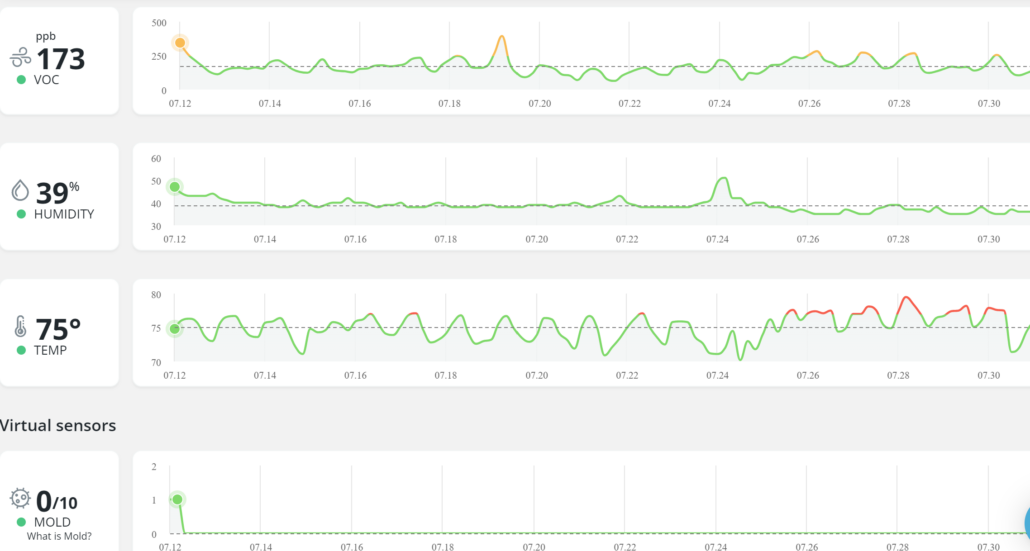
Utility room Airthings sensor after AprilAire was installed
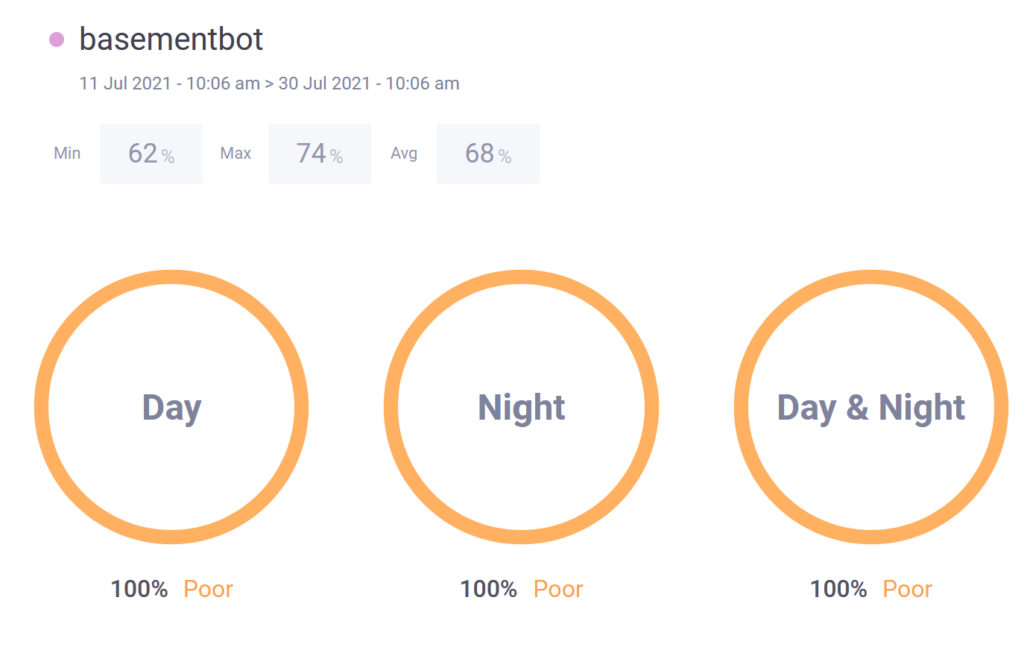
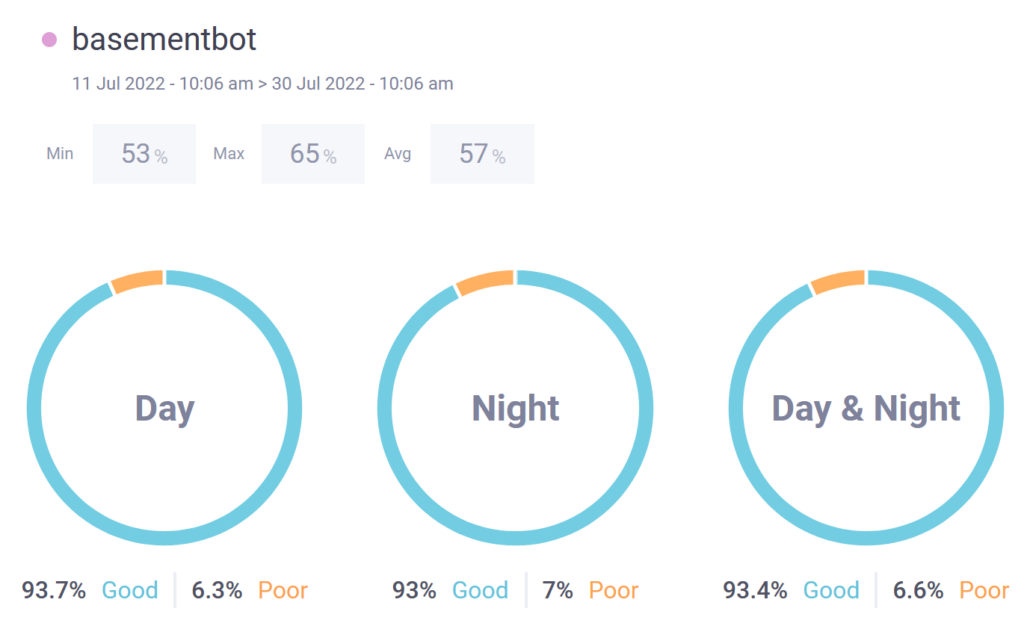
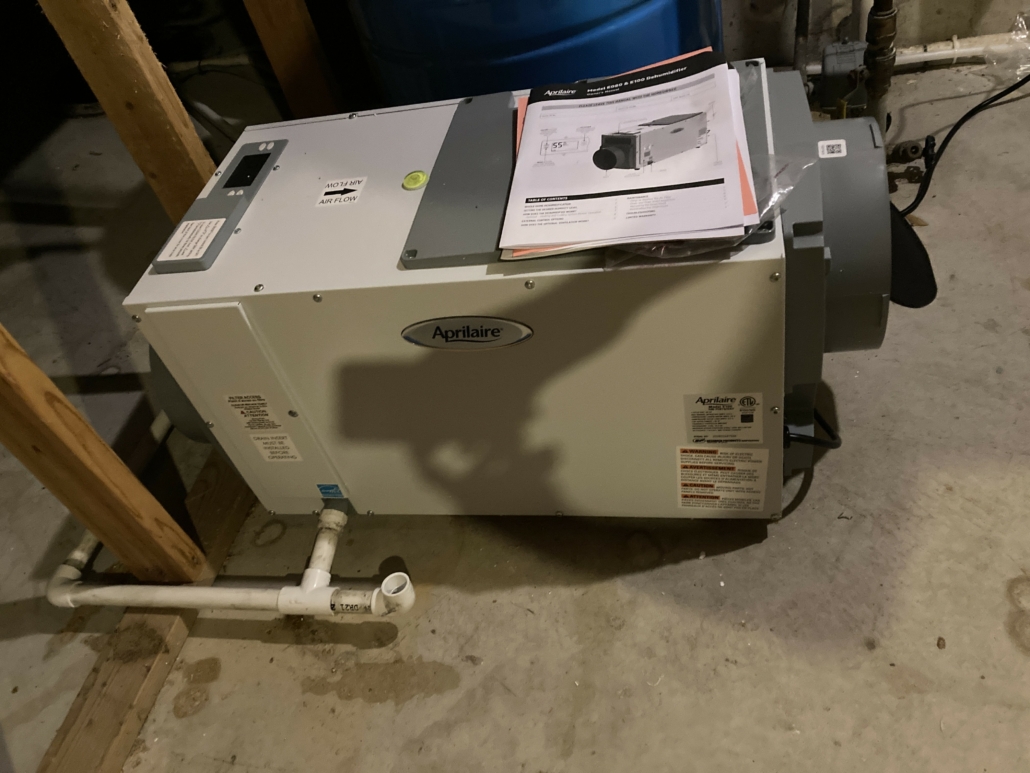
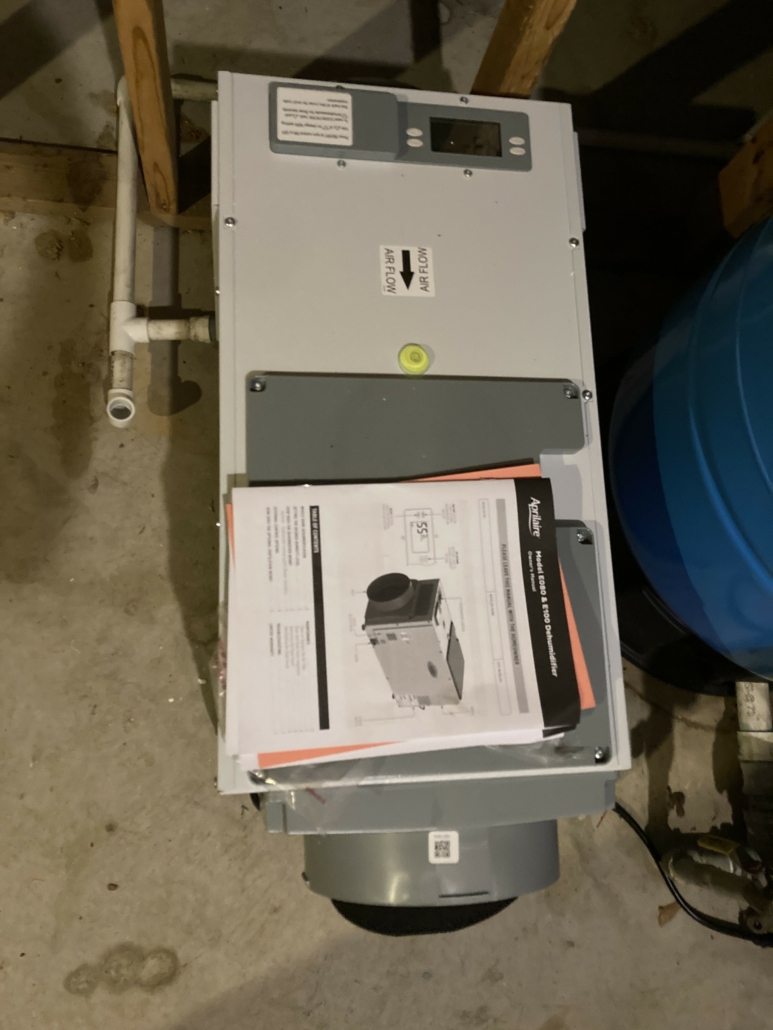
Overall I am very pleased with the humidity and especially dewpoint levels in my home and basement from this AprilAire Dehumidifier.
The dehumidifier itself shows me when I look at it anywhere from 41 – 43 and so slightly higher than what the Airthings Mold device is reporting that is right next to it. The dehumidifier never shuts off as far as I can tell despite how dry the airthings is reporting that room to be. When I walk into that room, it feels very bone dry. I was concerned about that until I ran an online Dew Point Calculator and you can see the results attached. The pre-data from 2021 is what I estimated the room to be, and while I never sensored that room in 2021, I would suspect that is what it runs from June – Aug, and I know in May, and Sept, dew points were tracked downstairs upwards of 70 on my tempo 2 monitor in 2021. One thing to note about summer 2022 here is it was extremely dry. I noticed significant humidity spikes upwards of 44 in the utility room when we had rare days of prolonged rain events. One day we even broke a record for rain, and the humidity spiked (below) more than I ever saw it.
With the device running all the time, there has been an increase in our electrical usage. We went from average baseload watts of .5 to 1.1, you can see some videos of my monitors before and after the dehumidifier, and you can see our energy use doubled from June to august (though, to be fair, in Aug, we increased electric car travel).
The other item with this device that surprised me is how loud it is, nearly reaching 60 DBA. I tested it with my NIOSH app. I was told this is because it is a standalone and so that rating is right on target with what is expected, and because it is in the utility room, it is not noticeable in the house.
We also confirmed major VOC spikes right after installation in the room and throughout the house, despite our ERV and 2 110 CFM bath fans running at full speed. It likely came from the glue running the condensate but hard to say. Like all new appliances, vent them awhile after installation.
As time went on, I realized I could maintain the proper dew point as the season when into fall by moving the system up to 50 for the humidity set point. This has saved a lot of energy and still maintains the basement dew point I am aiming for. As you can see by SunRadon monitors, our basement is getting dryer and dryer, but the device is still running from time to time, and now we have the humidifier running because we are starting to fall below the whole house goal of 40, but it is clear that room still has a lot of moisture as I hear the system kick on from time to time. Because the unconditioned room is now colder due to the temps falling, I am comfortable turning it up to 60, so it will still likely maintain an ok dew point throughout the winter without drying the house out more.
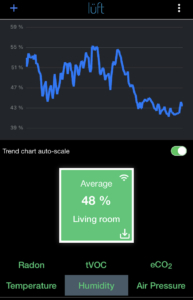
Sun Radon showing humidity dropping as winter comes yet dehumidifier is still running.
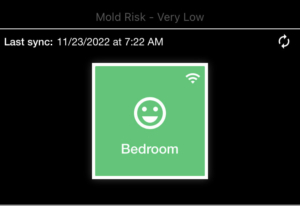
Sun Radon feature tracks humidity + temp overtime to assess mold risks.
In summary, my home’s (and most homes’) design requires supplemental dehumidification in the basement. The home and utility room should be tighter, the sump pit should be gasketed, and ideally, better foundation water management practices should have been implemented. Because that did not happen, I know I have to run this probably around 45 in the summer and in shoulder seasons too. I may need to condition the utility room to get the temp down and prevent mechanical damage. Thankfully in MI, half of our year is bone dry, so it is not a huge worry to run that high, but having the other half humid should be a concern for others with similar homes built this way which I believe is the average. Perhaps before next summer, we will get the sump pit gasketed and maybe do some airsealing to see if it has an impact. Climate forecasts predict dryer Michigan summers so that may help but overall, it seems like a good argument for people to get full basement dehumidification to protect their homes and health. So in summary, use air quality monitors to monitor basements and crawl spaces (such as SunRadon, which tracks mold risks or Awair) buy an Aprilaire dehumidier for your home and your client’s project, and when remodeling or building new, follow the water management practices given by energy star to keep moisture out.
Dew point calc before AprilAire
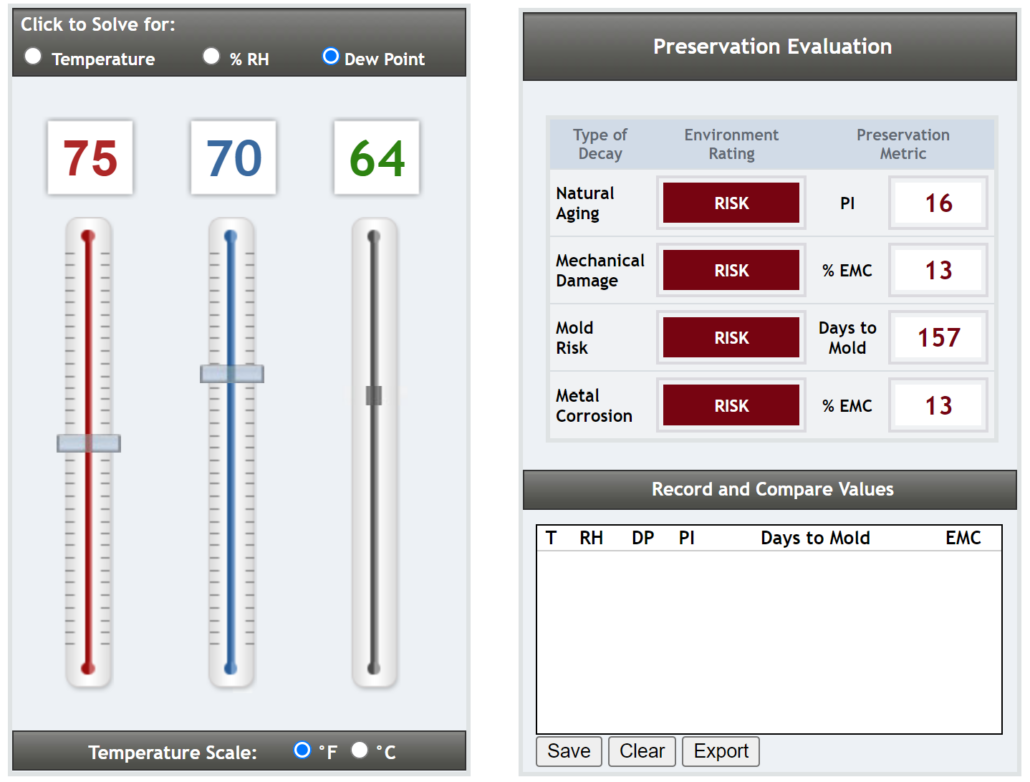
Dew Point Calculator While AprilAire is running
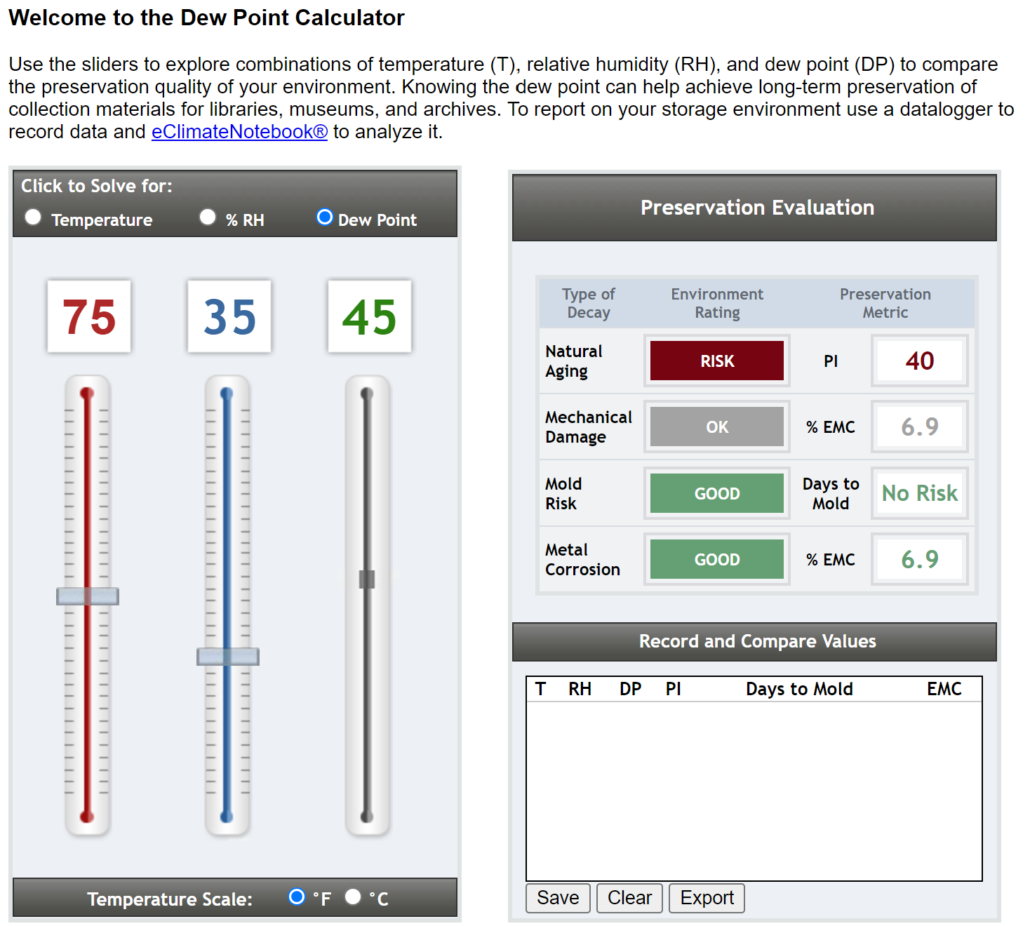
Extreme Humidity Spike when driving and long rains hit in utility room even with AprilAire turned down to 40 degrees

VOC spike after install

VOC spike moves to upstairs as well
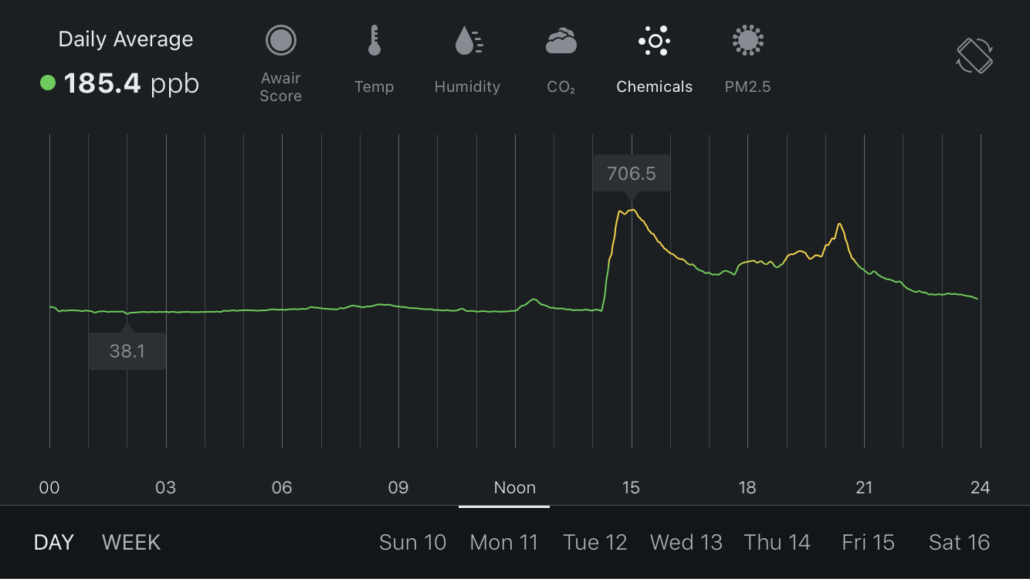
VOC spike moves to upstairs as well

Hourly usage snap shot before AprilAire
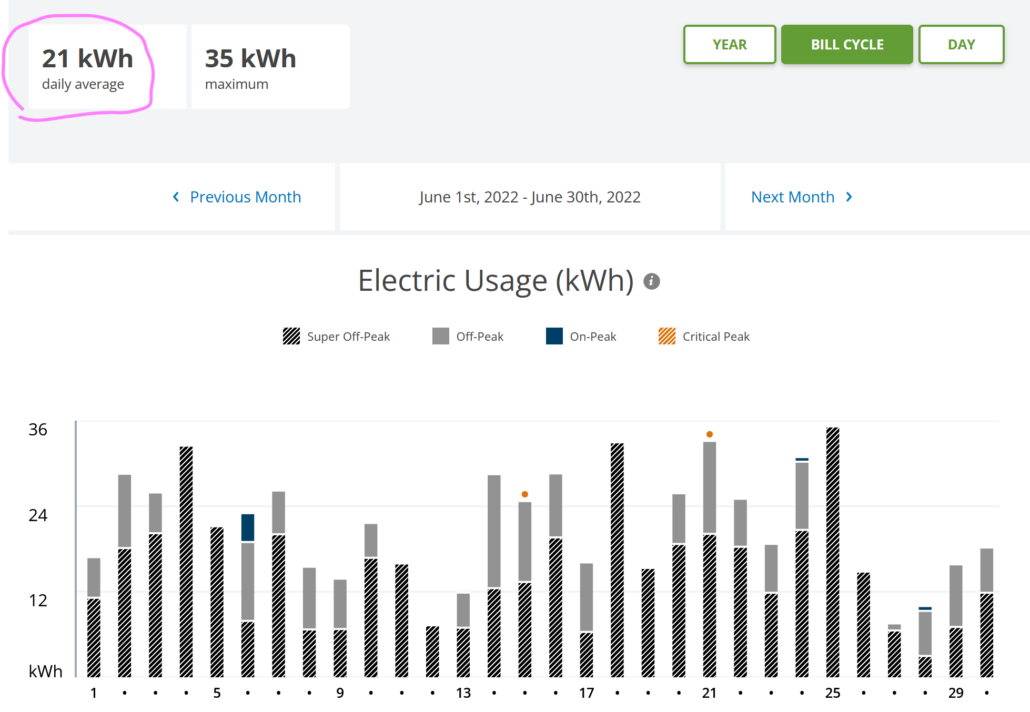
Hourly usage snap shot after AprilAire
